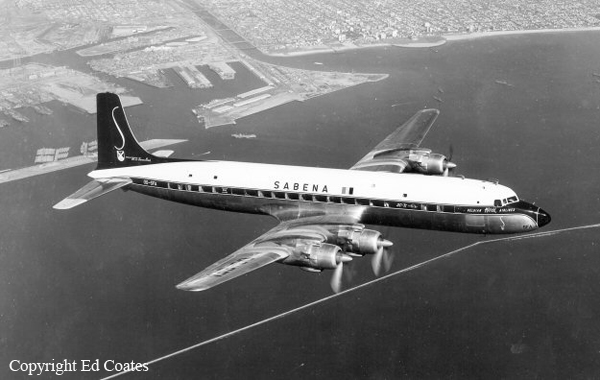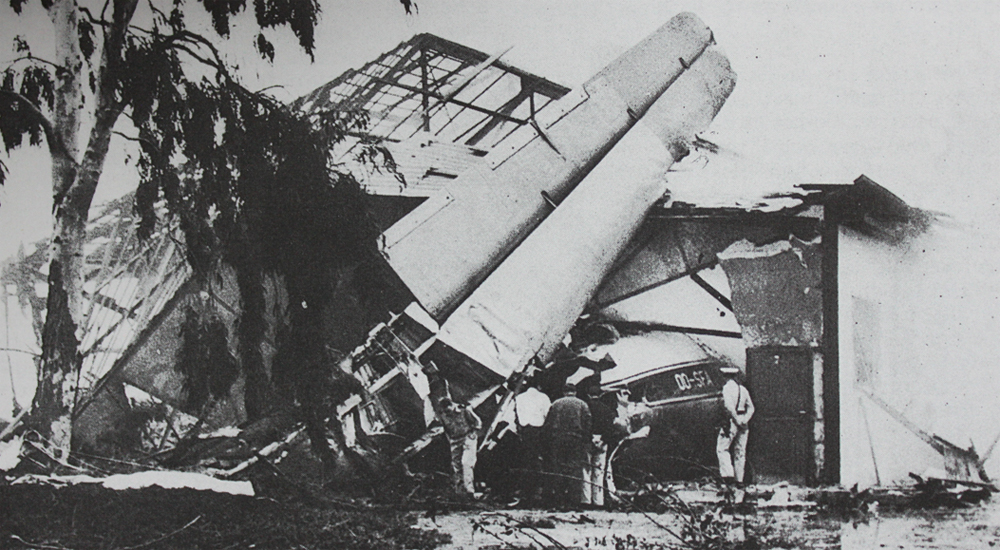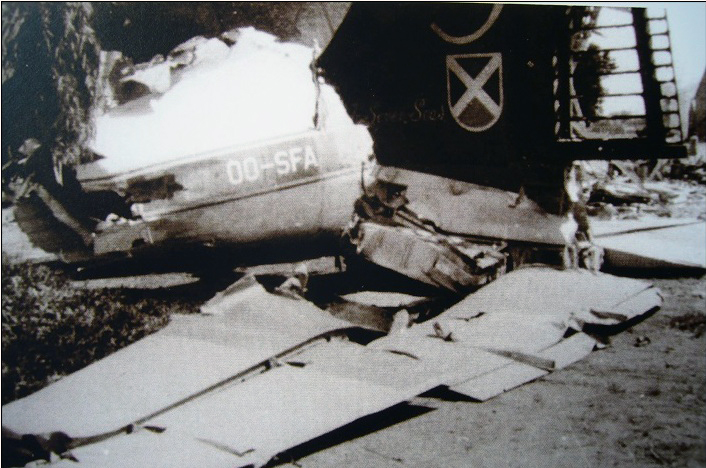Country
Operator Image

Crash of a Boeing 737-229C in Charleroi
Date & Time:
Apr 4, 1978 at 1807 LT
Registration:
OO-SDH
Survivors:
Yes
Schedule:
Charleroi - Charleroi
MSN:
20914/396
YOM:
1975
Crew on board:
3
Crew fatalities:
Pax on board:
0
Pax fatalities:
Other fatalities:
Total fatalities:
0
Aircraft flight hours:
6983
Aircraft flight cycles:
7424
Circumstances:
The aircraft was engaged in a local training flight at Charleroi-Gosselies Airport and was carrying a crew of three (one instructor and two student pilots) who just landed from Brussels. Both students were going to practice ILS approaches to runway 25 at Charleroi-Gosselies Airport (CRL) followed by a touch-and-go. The initial six approaches were uneventful. The students then changed seats. The second student's first approach and touch-and-go were uneventful. During the second touch-and-go a flock of birds (ring doves) were observed crossing the runway. Several birds were ingested as the airplane was rotating. The instructor took over control and attempted to continue takeoff. The airplane failed to respond to his control inputs and seemed to decelerate. He then decided to abort the takeoff. There was insufficient runway length available so the Boeing overran, struck localiser antennas and skidded. It lost its undercarriage and came to rest in flames on a road located about 320 meters past the runway end. All three occupants evacuated safely while the aircraft was destroyed by fire.
Probable cause:
The probable cause of the accident was the interruption of the takeoff maneuver at the time of the impact of birds, followed by a stop for undetermined reasons. The deceleration due to braking prevented the aircraft to respond to the action of the pilot-instructor using the ailerons. The takeoff was interrupted while the remaining runway length was insufficient to stop the aircraft.
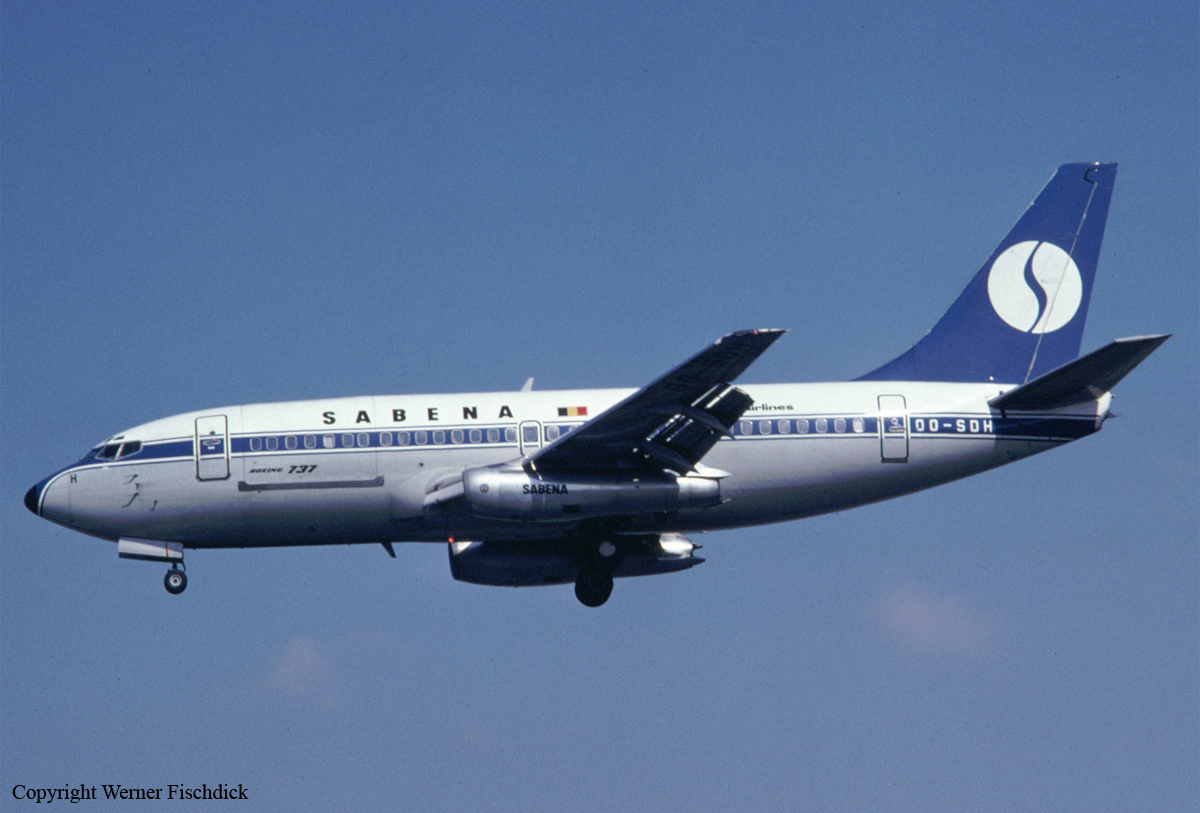
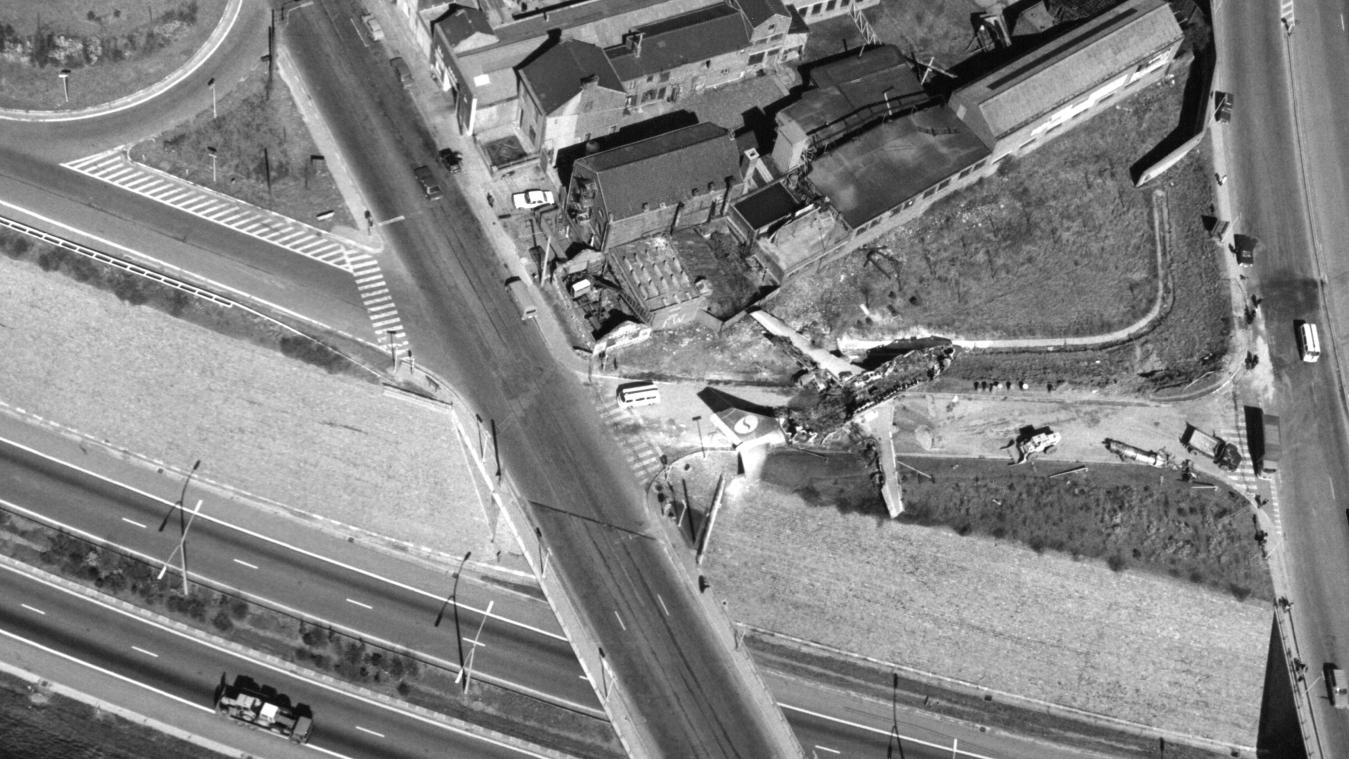
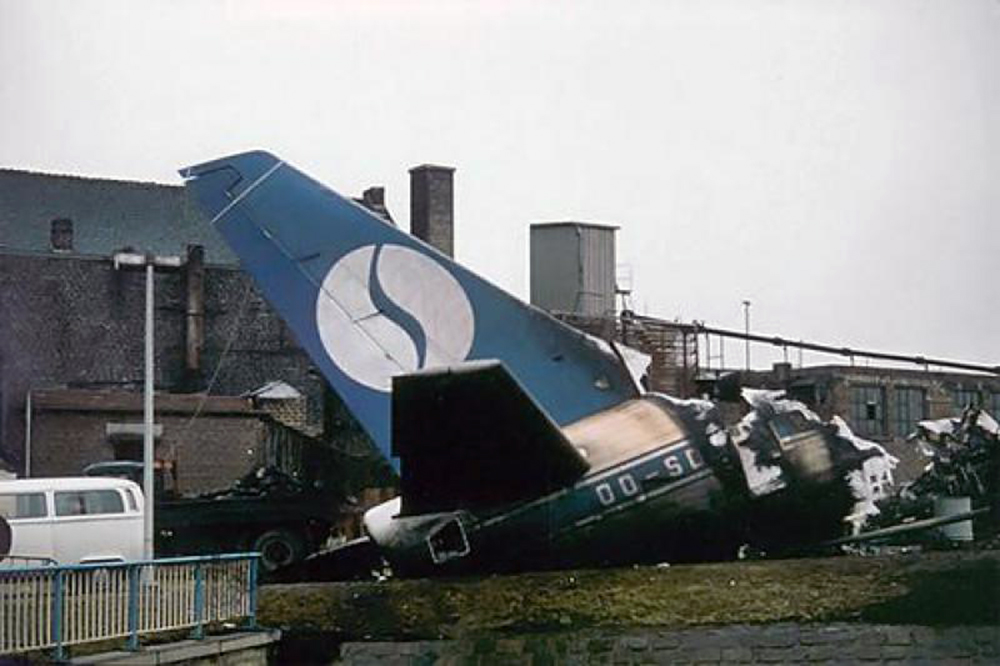
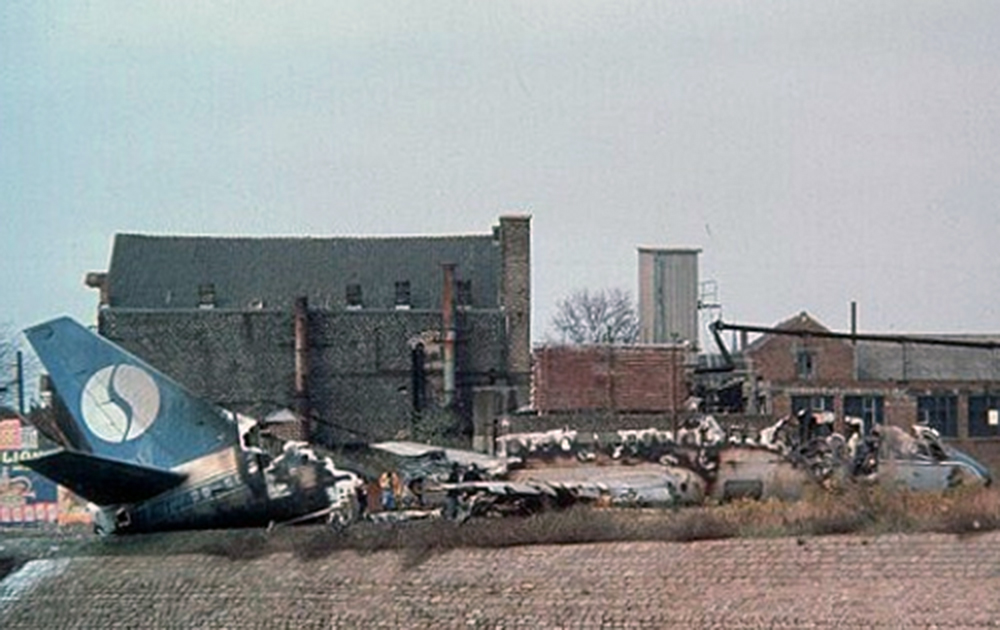
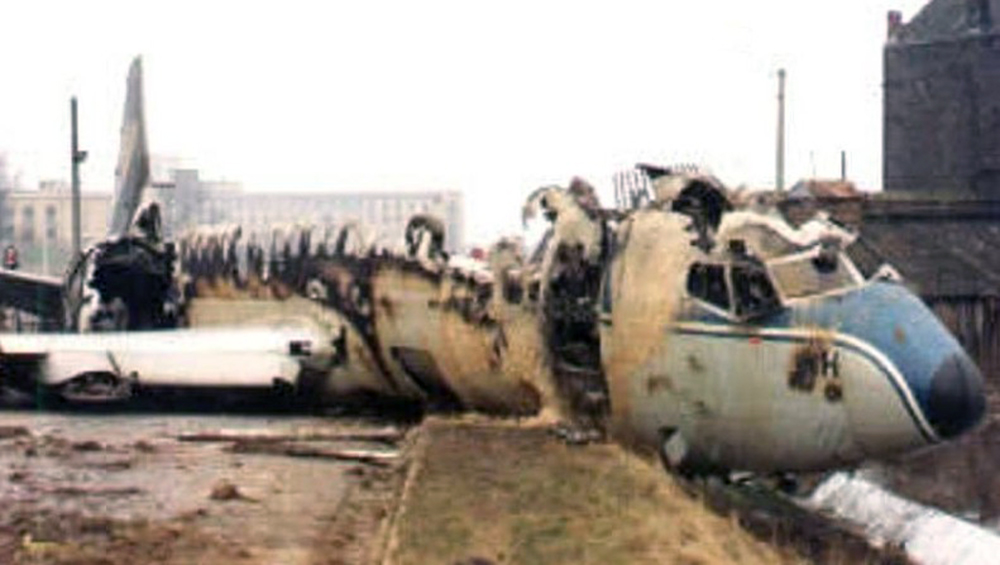
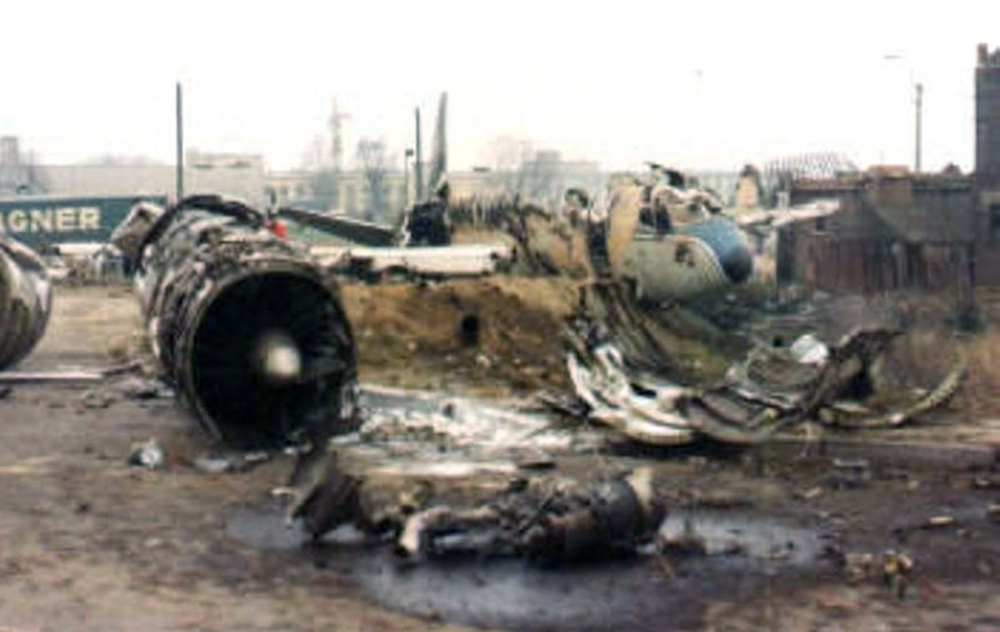

Crash of a Boeing 707-329 in Tenerife
Date & Time:
Feb 15, 1978 at 1313 LT
Registration:
OO-SJE
Survivors:
Yes
Schedule:
Brussels - Tenerife
MSN:
17627
YOM:
1960
Crew on board:
9
Crew fatalities:
Pax on board:
189
Pax fatalities:
Other fatalities:
Total fatalities:
0
Aircraft flight hours:
56787
Circumstances:
The airplane was completing a charter flight from Brussels to Tenerife, carrying 189 passengers and a crew of nine on behalf of Sebelair. On approach to Tenerife-Norte-Los Rodeos Airport, the crew informed ATC about technical problems as he was unable to lower the nose gear. The landing was completed on runway 12/30 with the nose gear retracted and the airplane slid for a distance of 1,200 meters before coming to rest in flames. All 198 occupants were evacuated, four passengers were slightly injured. The aircraft was destroyed by fire.
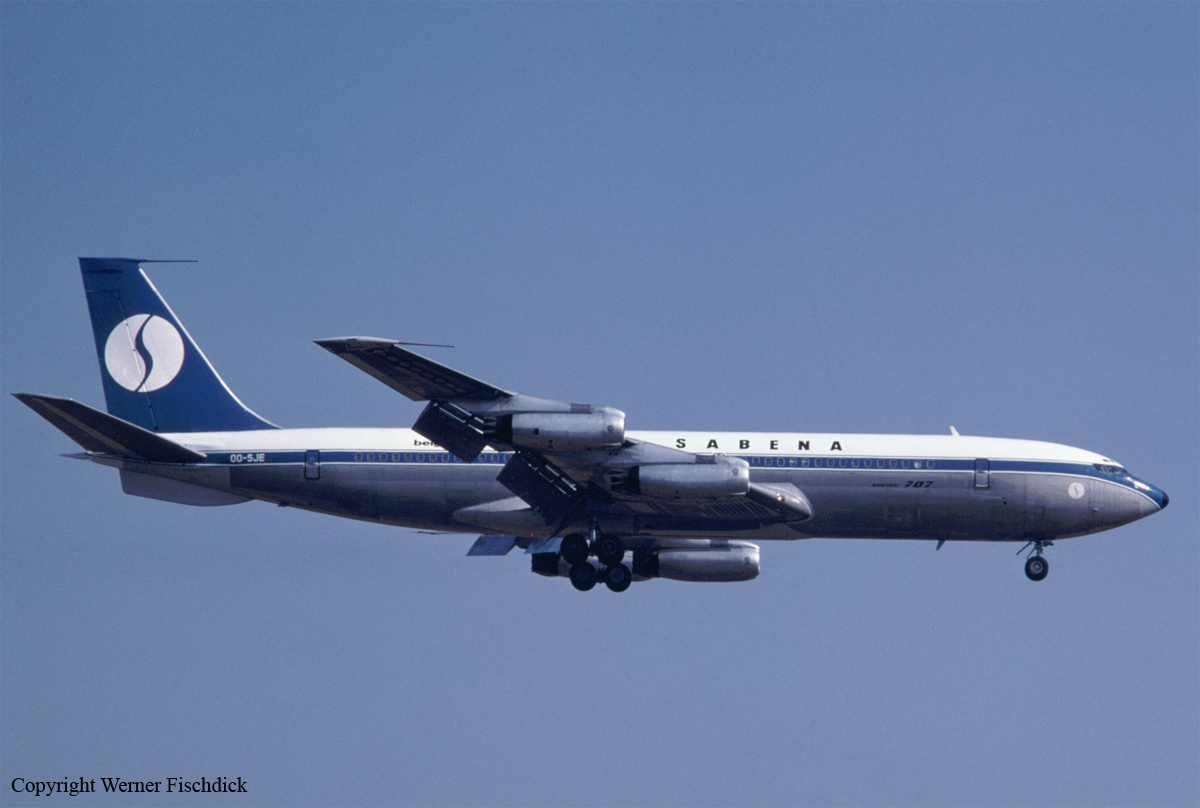

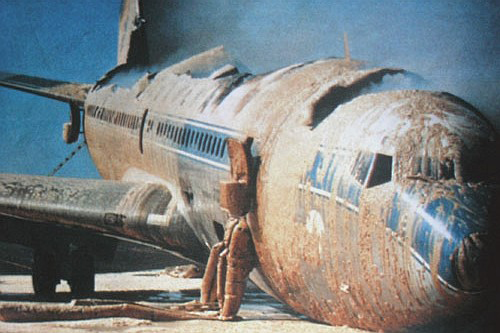

Crash of a Boeing 707-329C in Lagos: 7 killed
Date & Time:
Jul 13, 1968 at 0400 LT
Registration:
OO-SJK
Survivors:
No
Schedule:
Brussels - Lagos
MSN:
19211
YOM:
1966
Flight number:
SN712
Crew on board:
5
Crew fatalities:
Pax on board:
2
Pax fatalities:
Other fatalities:
Total fatalities:
7
Circumstances:
Flight SN712 was a non-scheduled international cargo flight from Brussels direct to Lagos on behalf of the Federal Government of Nigeria with 34 994 kg of cargo on board. No passengers were being carried. A flight plan was filed for a flight of 6 hours 9 minutes and the total endurance of the aircraft was stated as 8 hours 20 minutes. The designated alternate was Kano. The aircraft took off from Brussels at 2152 hours GMT on 12 July 1968 and routine radio reports were received during the en route phase of the flight. At 0325 hours R/T contact was made with Lagos approach control. The R/T transmissions with the aircraft have been identified as being almost certainly the voice of the co-pilot indicating that he was doing the R/T rhile the pilot-in-command was flying the aircraft. The aircraft gave an ETA at Lagos of 0355 hours and reported that it was at flight Level (FL) 330. A request was then made for the latest Lagos weather and the reply included the following information: wind: 210°/3 kt; visibility: 16 km; cloud: 5/8 stratocumulus 270 m, 7/8 altostratus 2 400 m, temporary thunderstorms, 118 cumulonimbus 2 000 ft; QNH: 1012 mb; temperature 24°. At 0327 hours the aircraft reported an ETA overhead Ibadan NDB of 0344 hours in response to a request for this information from Lagos. One minute later it reported that the Ibadan NDB did not appear to be operating. At 0336 the aircraft requested descent clearance. It was cleared to Lagos at FL60 and commenced the descent from FL330 at that time. Three minutes later the aircraft reported passing Ibadan and descending through FL275 but since it had reported earlier that the Ibadan NDB seemed not to be radiating it is not known how the position was determined. In reply Lagos approach stated that there was no delay in the approach and that the runway in use was 19. At 0341 hours, when the aircraft was about 50 miles north of. Lagos, it was recleared to 2 200 ft on a QNH of 1012 mb - and told to report field in sight. The flight recorder readout shows that shortly after this interchange the descent was interrupted while the speed decreased to a figure corresponding to the recommended maximum for landing gear extension and this speed was not exceeded for the remainder of the flight. Close study of the flight recording shows subsequent irregularity indicating that the automatic pilot was most probably disengaged at this stage of the flight. Subsequent to the speed reduction the rate of descent was re-established to approximately 2 000 ft/min and at 0350 hours the aircraft passed one mile to the east of Lagos airport whilst on a southerly heading at an altitude of 15 000 ft. The aircraft was heard flying over the airport at this time. The flight recorder indicates that a procedure turn was made to the south of the airport in the vicinity of the city of Lagos and at its conclusion there was a second interruption in the descent following which the airspeed remained below the maximum for 25° of flap. At 0354 hours the aircraft passed over the airport northbound at an altitude of 9 000 ft maintaining the average rate of descent of 2 000 ft/min for a further 2 1/2 minutes. At 0356 hours a procedure turn was commenced at an altitude of about 5 000 ft during which the rate of descent was reduced to 1 500 ft/min. The track of the aircraft between its passage over the airport northbound and the commencement of the final procedure turn is almost coincident with the outbound track of the published VOR approach procedure. At 0357 hours Lagos approach control was informed by the aircraft that it was in the procedure turn and requested to give the wind conditions. In reply control stated that the wind was calm and this was acknowledged. Shortly afterwards approach control instructed the aircraft to report runway in sight and this was also acknowledged. On completion of the procedure turn at an altitude of 1 400 ft (a height above the airport of 1268 ft) the airspeed was reduced from 190 kt to a little less than 160 kt and the rate of descent was reduced to 900 ft/min. The heading was stabilized on 197° M and at 0359 hours the aircraft asked for the runway lights to be put on maximum brightness. Approach control replied that the runway lights were on low intensity non-variable. A transmitter switch was then heard but there was no subsequent message from the aircraft before it crashed about 8 1/2 miles north of the airport approximately on the extended centre line of the runway. All the occupants were killed and the aircraft caught fire immediately and was burnt out. All seven occupants were killed.
Probable cause:
The accident was caused by the aircraft descending below its minimum safe altitude for reasons that have not been determined. The following findings were reported:
- The aircraft made an almost continuous descent from FL275 to the point of impact without an intermediate report being made of either its height or position between "passing IB beacon" and a point "on procedure turn" north of Lagos airport,
- The approach to land was made at night without ILS glide slope or marker beacon guidance,
- There was an absence of instructions regarding the monitoring of the altitude by the pilot not flying the aircraft and the cross checking of altimeters during an approach.
- The aircraft made an almost continuous descent from FL275 to the point of impact without an intermediate report being made of either its height or position between "passing IB beacon" and a point "on procedure turn" north of Lagos airport,
- The approach to land was made at night without ILS glide slope or marker beacon guidance,
- There was an absence of instructions regarding the monitoring of the altitude by the pilot not flying the aircraft and the cross checking of altimeters during an approach.
Final Report:
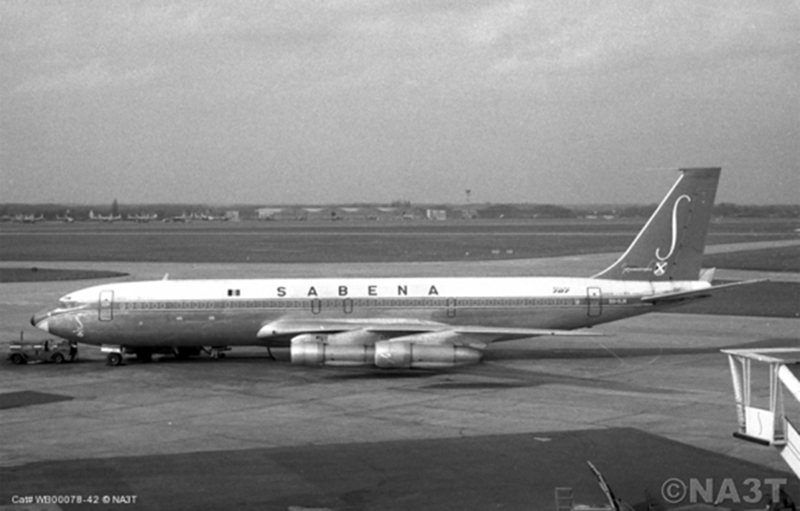
Crash of a Boeing 707-329 in Brussels: 73 killed
Date & Time:
Feb 15, 1961 at 1005 LT
Registration:
OO-SJB
Survivors:
No
Schedule:
New York – Brussels
MSN:
17624
YOM:
1959
Flight number:
SN548
Crew on board:
11
Crew fatalities:
Pax on board:
61
Pax fatalities:
Other fatalities:
Total fatalities:
73
Captain / Total hours on type:
21.00
Copilot / Total hours on type:
20
Aircraft flight hours:
3038
Circumstances:
Following an uneventful transatlantic flight from New York, the crew started the approach to runway 20 at Brussels-Zaventem Airport. On short final, while at an altitude of 900 feet, the crew raised the landing gear, increased engine power and made a go around. The plane made three 360° turns to the left and climbed to 1,500 feet. During these turns the bank angle increased more and more until the aircraft was in a near vertical bank. The wings then leveled, followed by an abrupt pitch up. The 707 lost speed, started to spiral rapidly towards the ground nose down, crashed and caught fire. All 72 occupants were killed as well as one farmer working in the field. Among the passengers were 17 members of the US National Hockey Team who were flying to Prague to take part to the World Championship.
Probable cause:
Having carried out all possible reasonable investigations, the Commission concluded that the cause of the accident had to be looked for in the material failure of the flying controls. However, while it was possible to advance certain hypotheses regarding the possible causes, they could not be considered entirely satisfactory. Only the material failure of two systems could lead to a complete explanation, but left the way open to an arbitrary choice because there was not sufficient evidence to corroborate it. The FAA commented that the most plausible hypothesis was a malfunction of the stabilizer adjusting mechanism permitting the stabilizer to run to the 10.5° nose-up position.
Final Report:
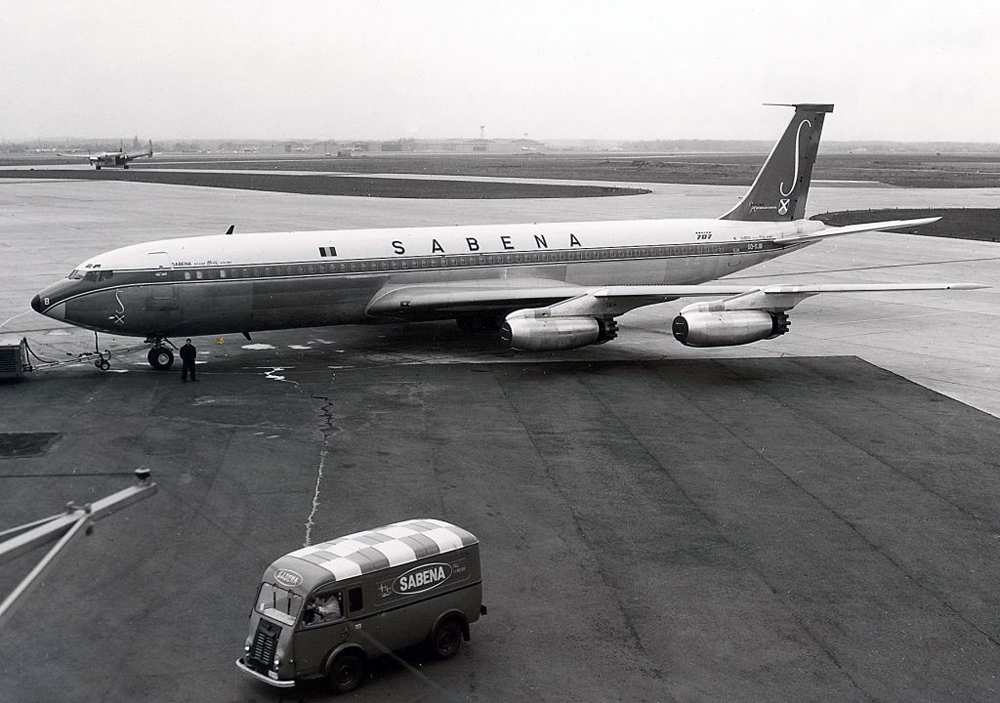
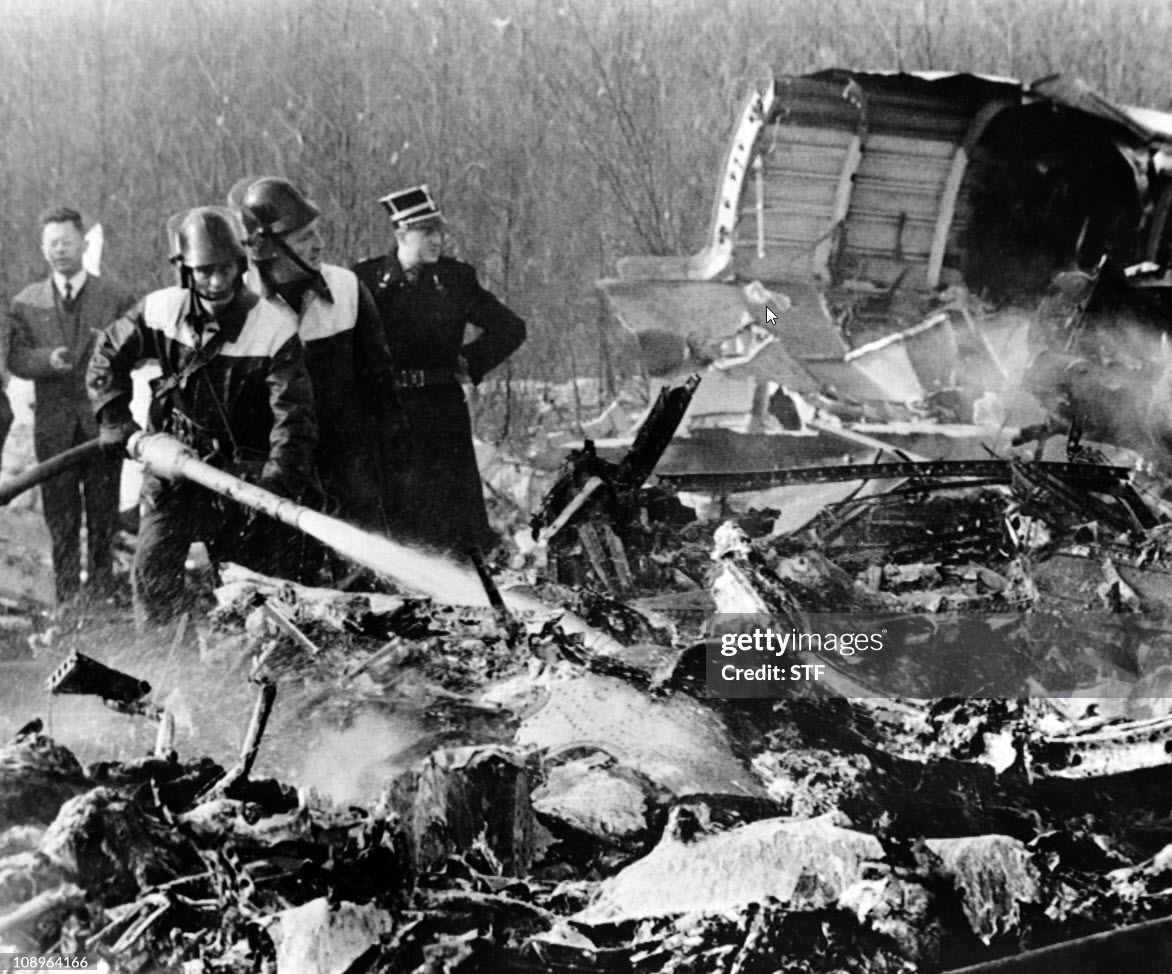
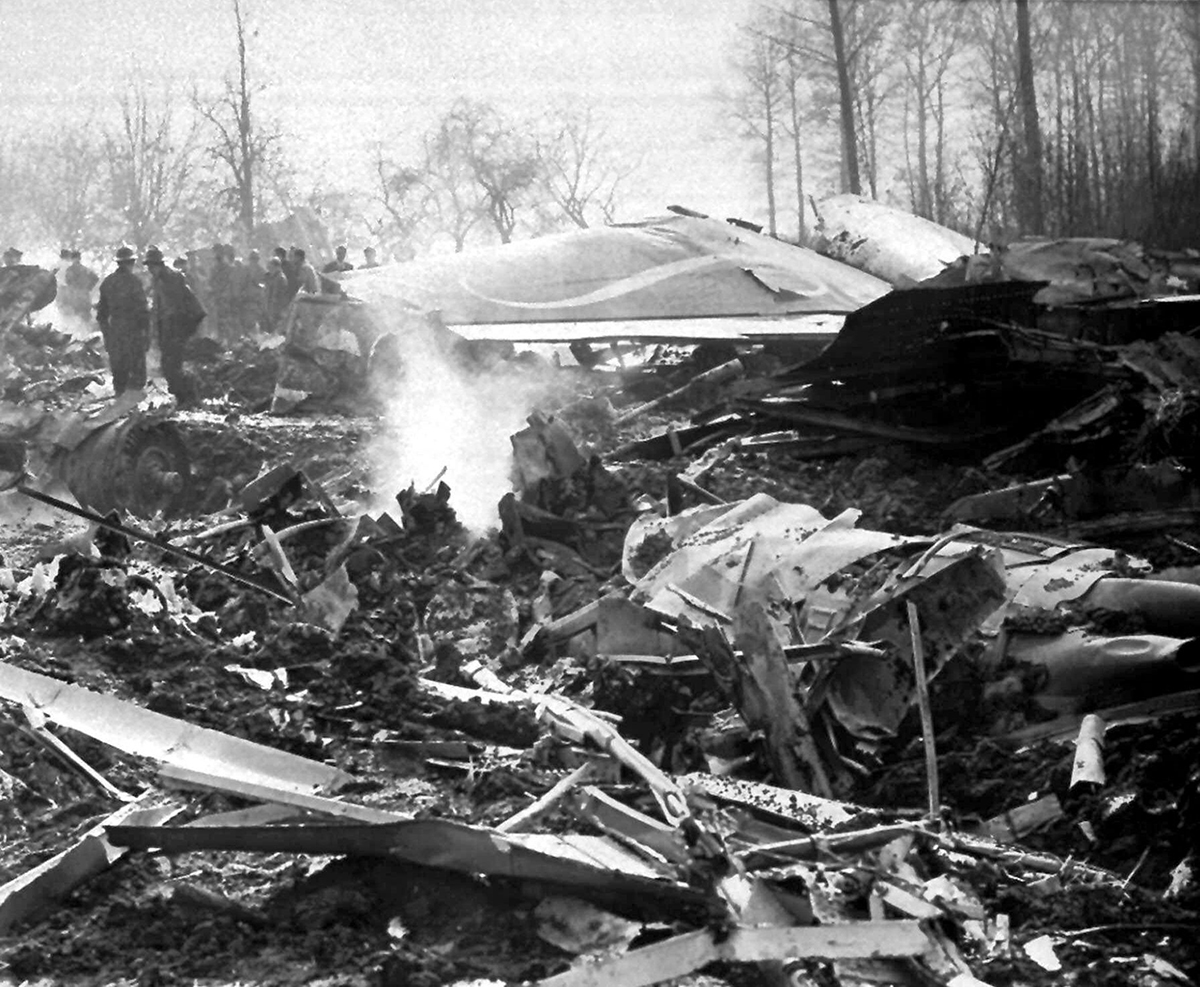
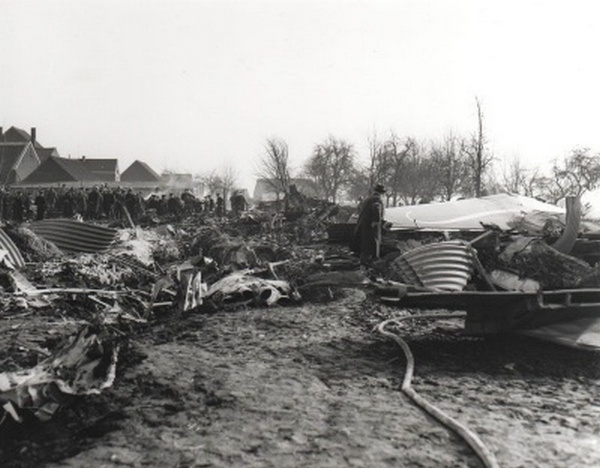
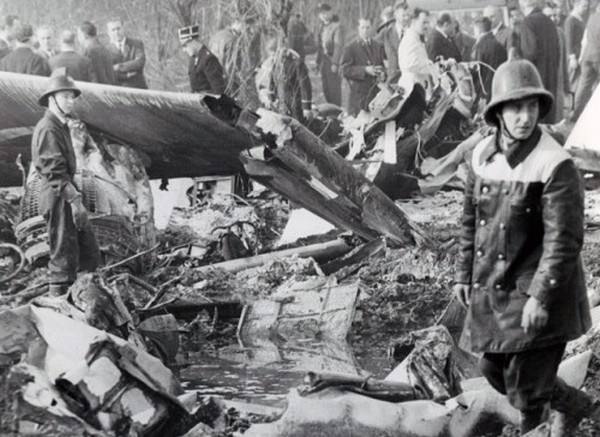
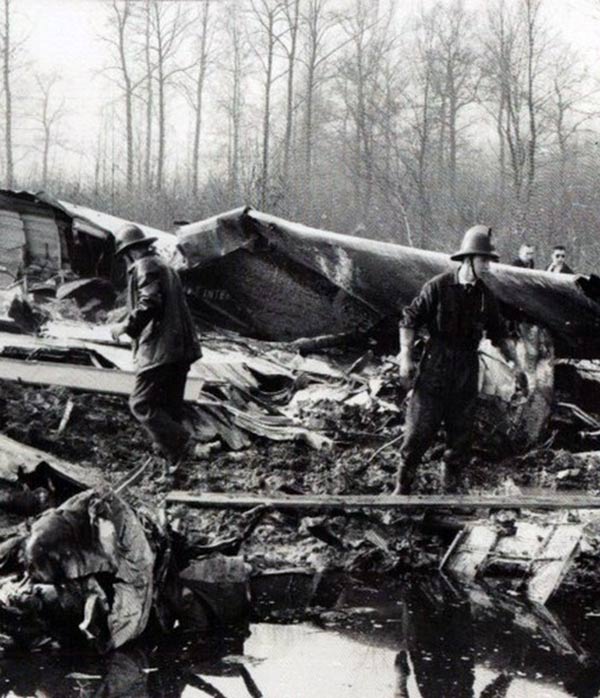
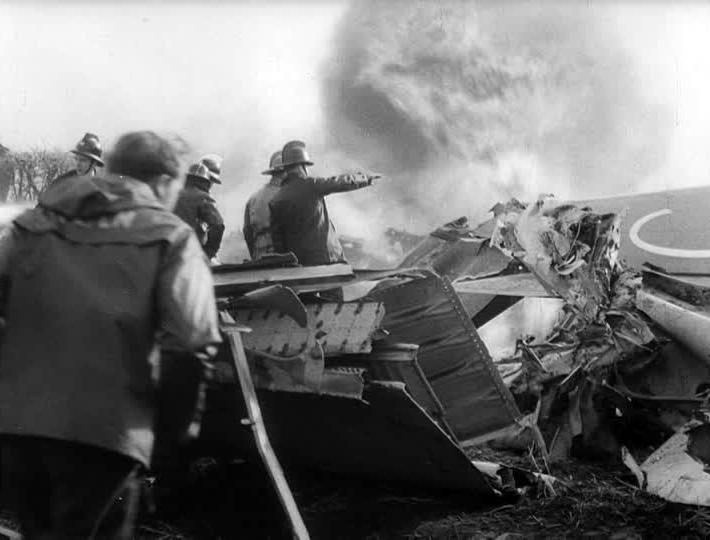
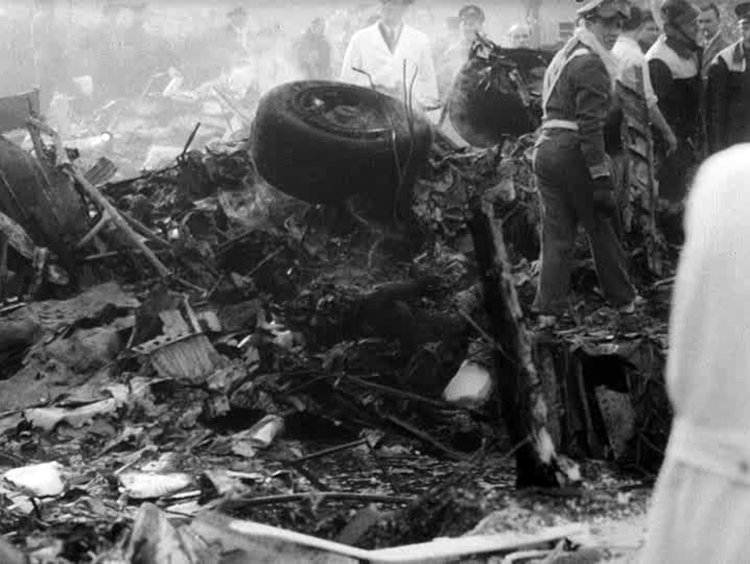
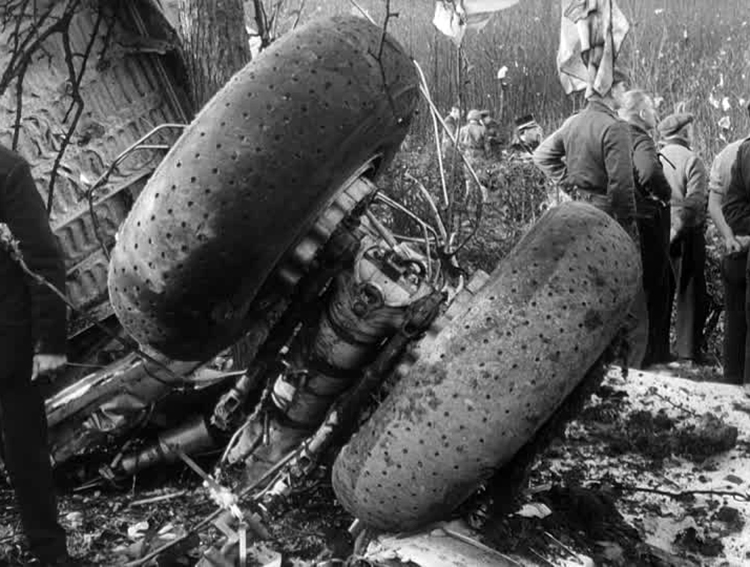
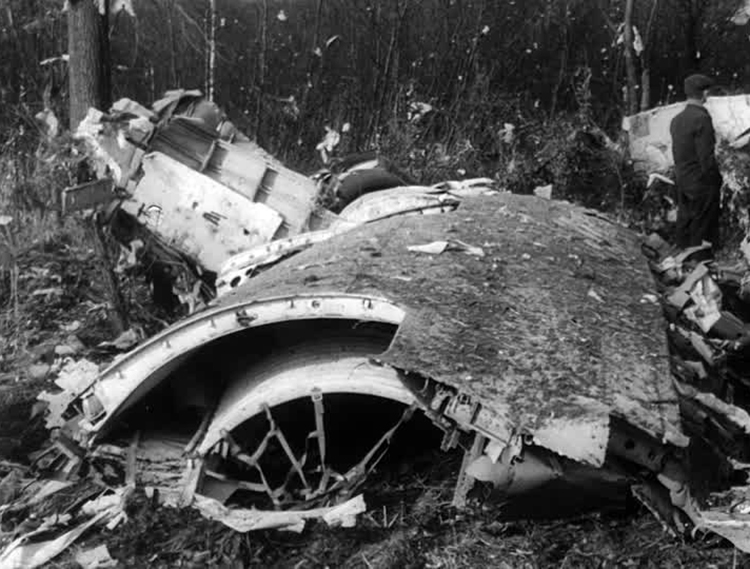
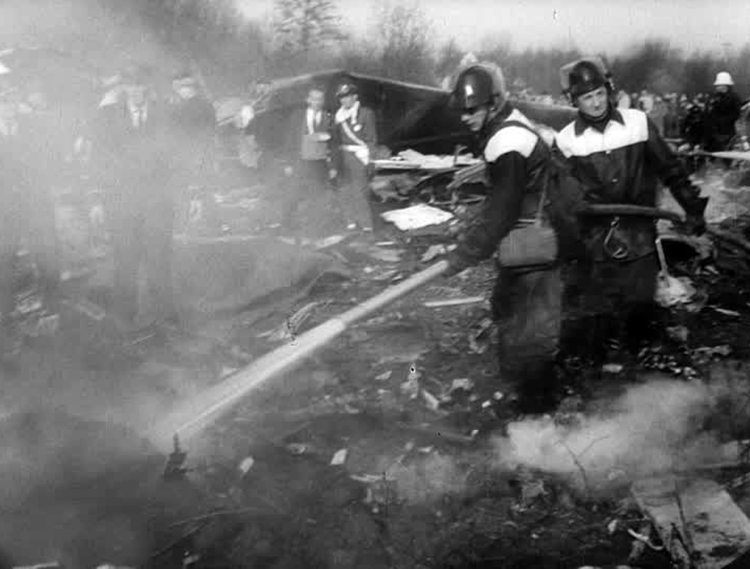
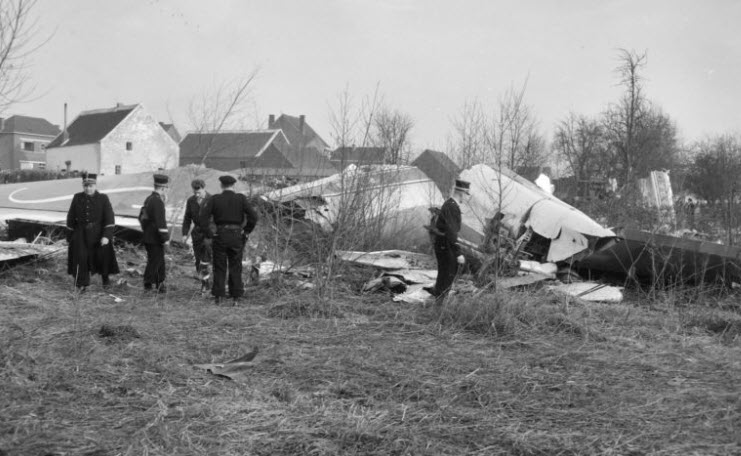
Crash of a Douglas DC-7C in Casablanca: 65 killed
Date & Time:
May 18, 1958 at 0425 LT
Registration:
OO-SFA
Survivors:
Yes
Schedule:
Brussels – Lisbon – Léopoldville
MSN:
45157
YOM:
1956
Crew on board:
9
Crew fatalities:
Pax on board:
60
Pax fatalities:
Other fatalities:
Total fatalities:
65
Circumstances:
The Sabena flight, originating at Brussels, Belgium had departed Lisbon following an intermediate stop on a flight to Leopoldville (now Kinshasa), Belgian Congo. Vibration in the no. 1 engine forced the crew to shut it down. Casablanca ACC was advised that the flight wanted to make an emergency landing there. At 04:19 a runway 21 approach was attempted, but the aircraft did not touch down. Some 600 m past the runway threshold at a height of 5 m and with landing gear down and full flaps, full power was applied. The DC-7 then climbed in a sharp left turn. Reaching a height of 25 m, the plane stalled, crashed into buildings and caught fire. The correct procedure for going around would have been to apply full throttle only gradually attaining V2 speed; retracting the landing gear; and, at 115 kt, retracting the flaps from 50 to 20°.
Probable cause:
An error of judgement in re-application of power when the aircraft was neither in the appropriate configuration nor at a sufficient speed to carry out the attempted safety manoeuvre.
